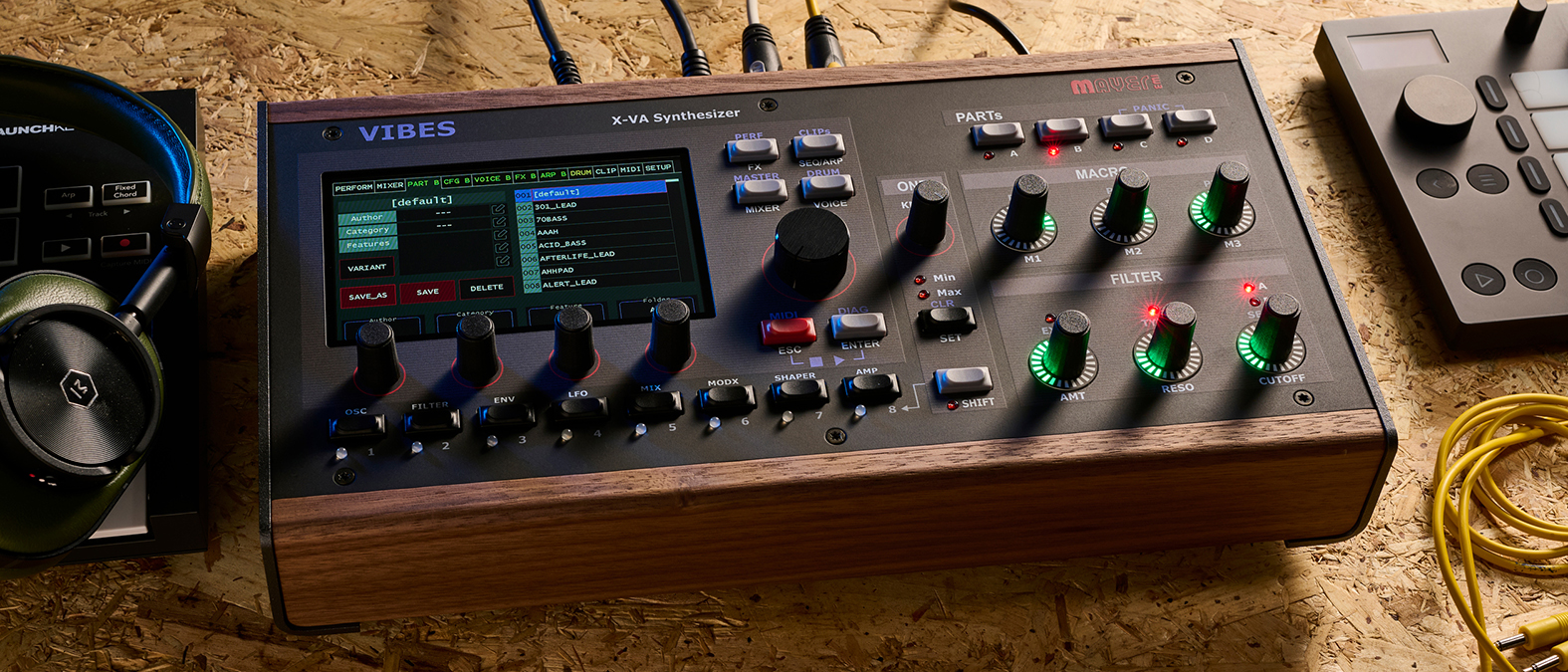MusicRadar Verdict
A wonderful blend of multitimbral synth hardware with clip style sequencing, wrapped up in a solid, performance-based module. A master of many production tasks that exists in a niche of its own.
Pros
- +
Ableton-style clip launching in hardware.
- +
Great flexibility with plenty of effects and modulation.
- +
Lovely touchscreen displays all synth architecture.
Cons
- -
Still lacks the multi outs like its older sibling.
- -
Some lagging on the OS.
- -
Computer musicians won't need much that it offers.
MusicRadar's got your back
Mayer EMI MD850 Vibes: What is it?
Mayer EMI's MD850 Vibes is a synth with a small company Eurorack ethos, but with a spec that undoubtedly has big company aspirations. It's a physically streamlined – although in some ways better – version of the company's MD900 VA and wavetable synth, so boasts that machine's 4-part multitimbral and stereo architecture, Ableton-style sequence clip launching for triggering those multi-part performances, quality effects (up to 10 per part), big modulation specs, sample import and more.
There are less hands-on controls on Vibes, for sure, but more stereo voices (24 as opposed to 16 on the MD900), an additional physical modelling oscillator mode, and a keener asking price. At around £1,950, it's nearly a grand less than its bigger sibling, so Vibes immediately irons out some of the cost criticisms levelled at that machine.
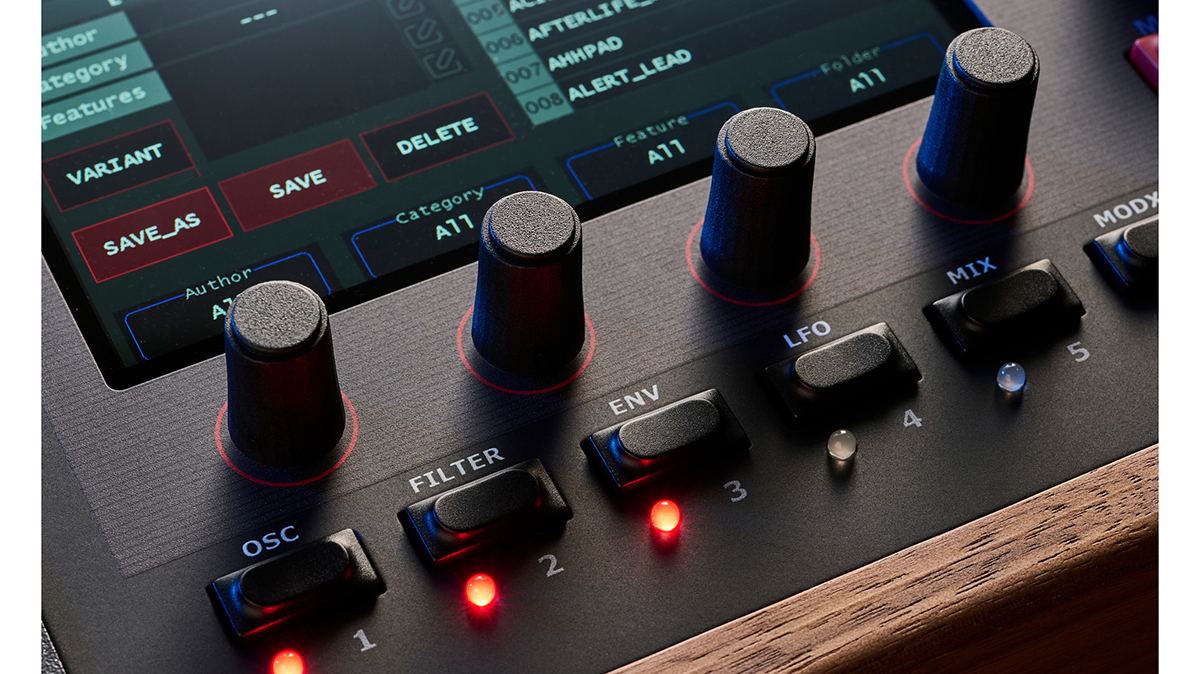
However, the best part of two grand for a VA/wavetable digital synth is still a big ask in the current synth market, but luckily Vibes has enough details and workflow flourishes that can only be found in products designed by smaller companies. Synths designed by committee and made for the masses can be bland – this is by no means that, but an extremely capable workstation with some unique qualities.
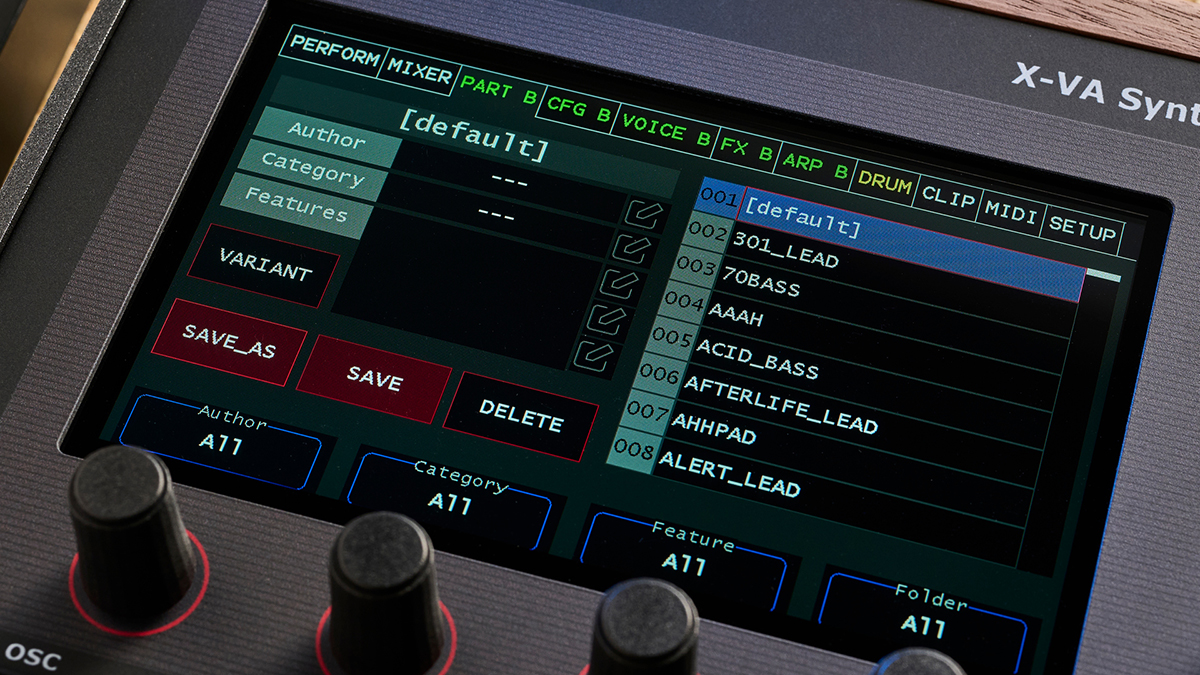
Mayer EMI MD850 Vibes: Performance and verdict
Vibes' small form factor obviously means less controls so, as just one example, it loses many of the lovely sliders from MD900, but cleverly gets around this with multi-use encoders and a neat colour scheme linked to that 4-part (plus drums) architecture, so you can easily tell which control is operating what.
The core and pretty slick operating system remains the same as that found in the MD900, where function buttons and a row of mode encoders combine with a not too big/not too small touchscreen to get you where you need to be in a short-ish space of time. Main areas, then, are Effects, Master, Voice and Matrix which double as the Clip launcher/Arranger, Drums and Sequencer/Arpeggiator.
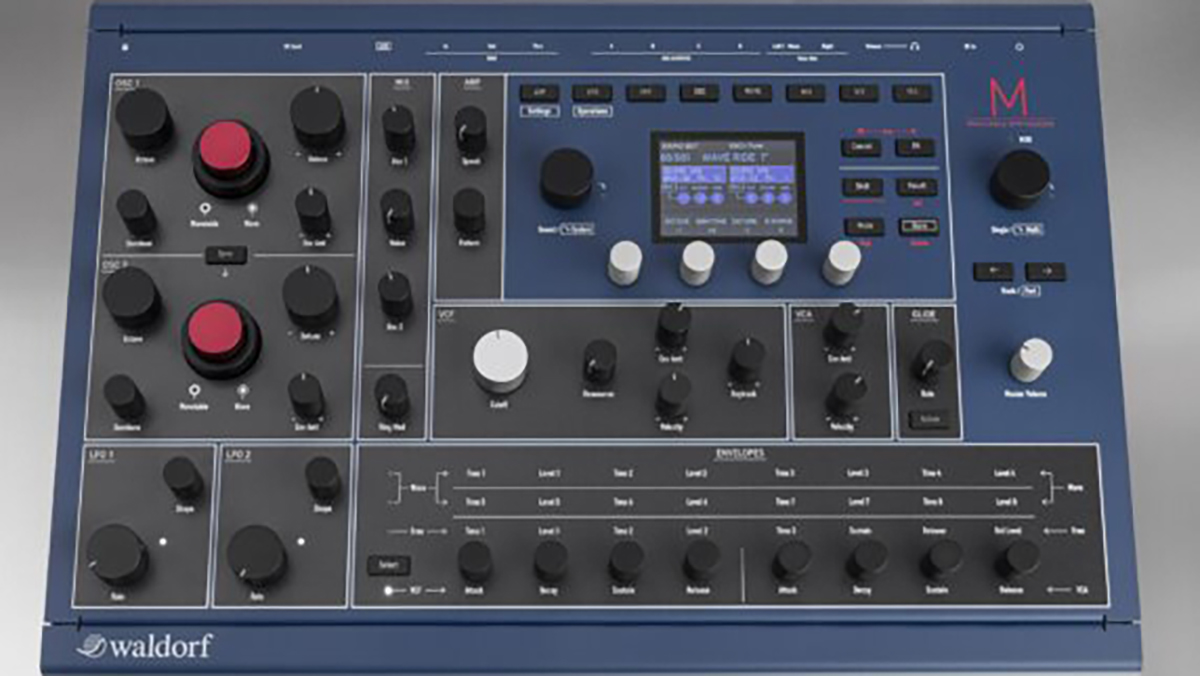
• Waldorf M
As we say there are few synth modules with Vibes' complete performance aspirations, but Waldorf M is a 4-part multi synth with plenty of outs and arpeggiation but lacks the polyphony (it goes up to 16 voices) and the clip launch features.
• NI Maschine+
In the hardware DAW/Groovebox realm, there are many choices across all budgets from Sonicware's Liven upwards, but NI's Maschine+ is a great loop-based groovebox, with the company's synths and sampling at its core.
The touchscreen itself is a wonderful and essential addition. It makes going deep into the features easy, or remaining on a top layer for performing as intuitive as that process should be. You can't do things like drag and size notes when programming sequences – editing is done by dial per step – but other functions like the mixer and, perhaps obviously, the clip launcher feel they have been lifted straight from a DAW. Hardware imitating software imitating hardware. We like it.
Overall, then, Vibes has a very tidy workflow once you get your head around its deep but clear architecture, although we did find ourselves hitting buttons twice as there can be a lag. We also found the odd glitch where a filter, for example, didn't work on a part as expected. All these can, we suspect, be ironed out in future OS updates.
Sounds wise, Mayer EMI sees Vibes, as its name implies, as its cooler ideas generator and live performer, and MD900 as its albeit just-as-good live contender, but more of a hands-on tweaking sound design tool. And we'd have to agree, although the sonic tweaking is still possible with Vibes – the modulation options and many ways to stack effects are excellent for exploration.
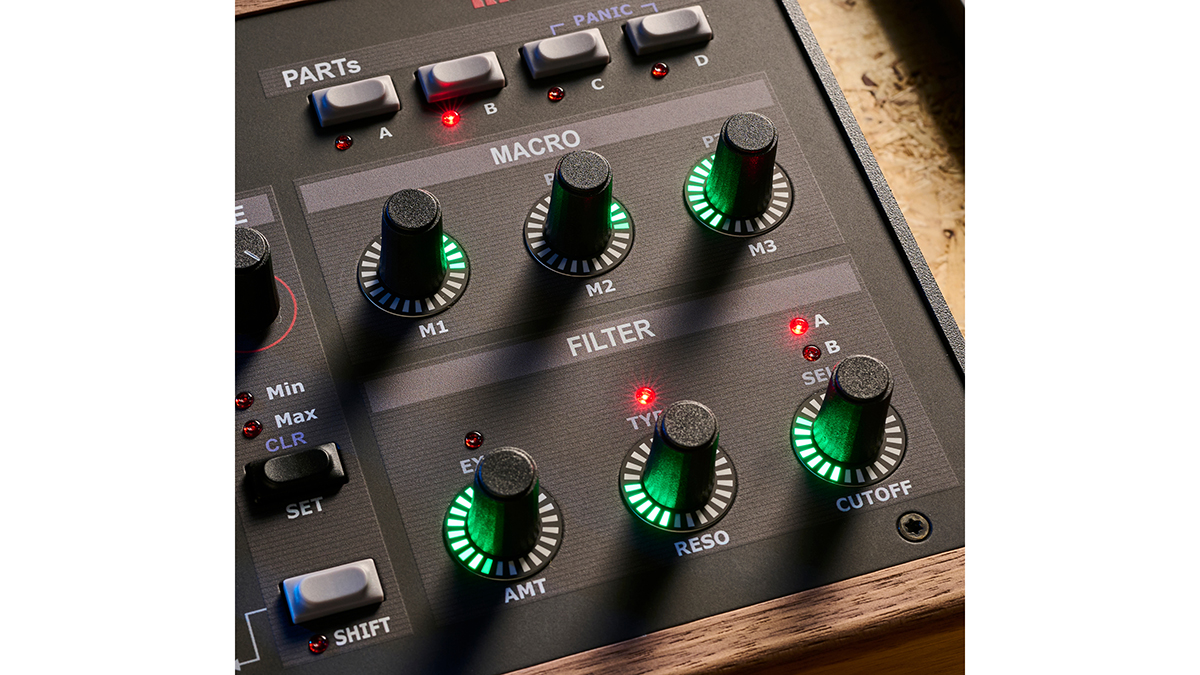
With its extra sampling capabilities and on-board 'real' sounds, Vibes can sometimes veer a little towards the all-singing, all-dancing vibe of a Korg or Yamaha workstation, which is no bad thing depending on your production standpoint, but can also detract from its filthy techno capabilities – which, it must be said, are its bread and butter.
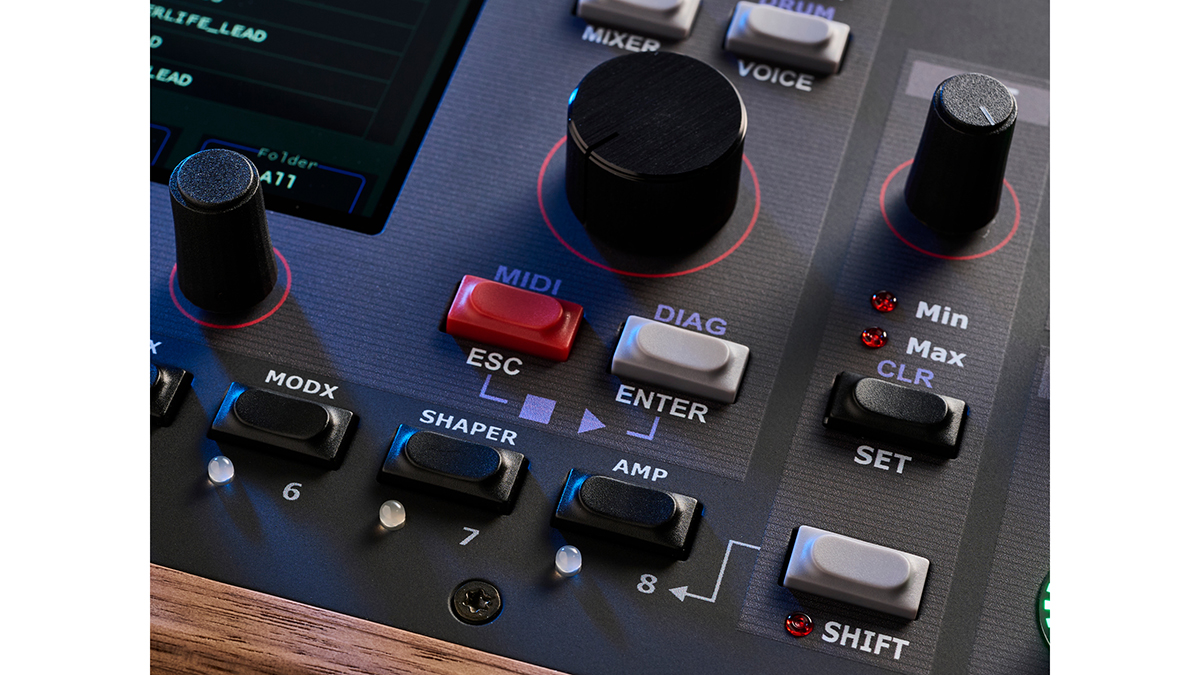
Good Vibes?
There's a definite niche in which Vibes sits, as it somehow manages to straddle a lot of product categories, not least as a high-end synth and all-in-one hardware DAW. It could even be seen as a groovebox for the 21st century, but is perhaps so much more than that implies. In fact, its only problem is that it could be seen as a jack of many trades, but it actually masters many of them, its only downfall being that if you are a computer-based musician you'll not need at least half of its capabilities.
But as an all-in-one unit for creating ideas on the road or realising them on stage, Vibes has a wide-ranging sonic palette, huge depth, an awful lot of features to tweak and modulate everything. Truth is, it really exists in a space of its own, and can literally be set up anywhere, and act as the core of an electronic performance setup. Ultimately, Vibes is a powerful and curious performance synth from a small company but, in many ways, shows the big boys how to do it.
MusicRadar verdict: A wonderful blend of multitimbral synth hardware with clip style sequencing, wrapped up in a solid, performance-based module. A master of many production tasks that exists in a niche of its own.
Mayer EMI MD850 Vibes: Hands-on demos
SYNTH ANATOMY
Bonedo Synthesizers
Gearjunkies
Mayer EMI MD850 Vibes: Specifications
- KEY FEATURES: 4 part VA/Wavetable synth + 14 Drum Instruments; 24 stereo voice polyphony;2 oscillators with 3 modes (Algorithm with 8 waveforms, Wavetable with 50 wavetables and Resonator with 64-band physical modelling); sample/noise oscillator; 2 stereo multimode filters (10 models); 4 ADSRs; 3 LFOs; 1 waveform shaper; modulation matrix (25 sources, 40 destinations; arpeggiator and sequencer per synth part; clip launcher with 7 tracks, drum track and 2 external MIDI tracks.
- CONTACT: Mayer EMI
Andy has been writing about music production and technology for 30 years having started out on Music Technology magazine back in 1992. He has edited the magazines Future Music, Keyboard Review, MusicTech and Computer Music, which he helped launch back in 1998. He owns way too many synthesizers.
With its latest free update, Ableton has finally turned Note into the app I always wanted it to be
Technically capable, but struggle to make your tunes sound musical? 5 simple music theory hacks to make your tracks stand out
"Despite its size, it delivers impressive audio quality and premium functions as well as featuring a good selection of inspired sounds": Roland GO:Piano 88PX review
